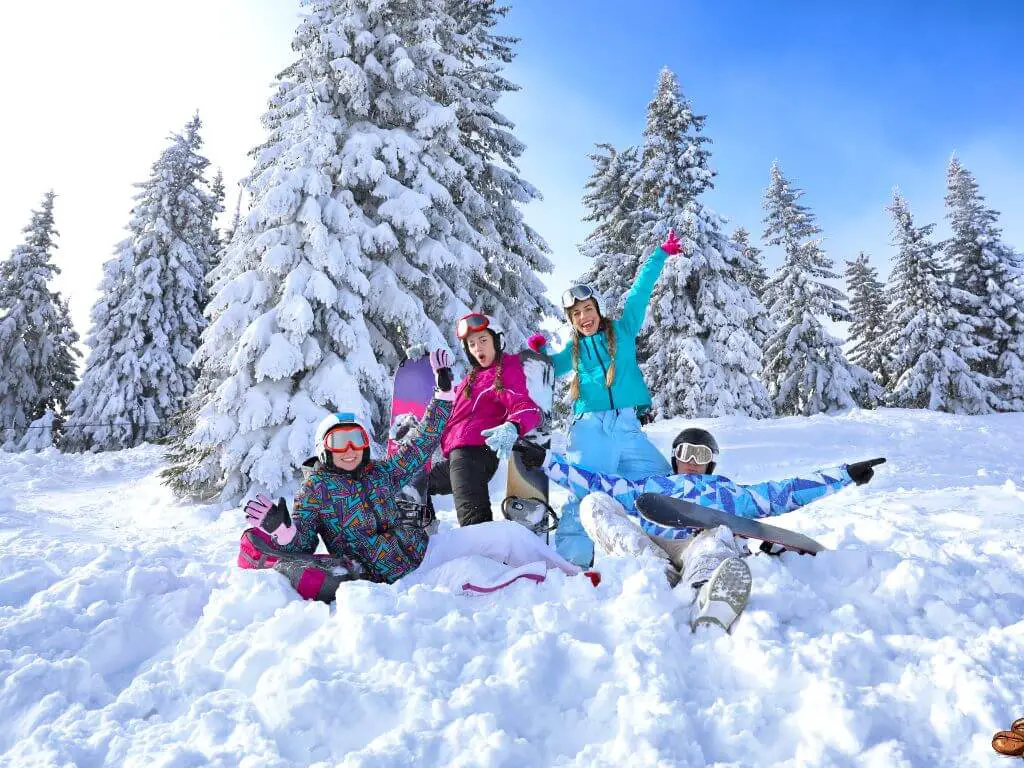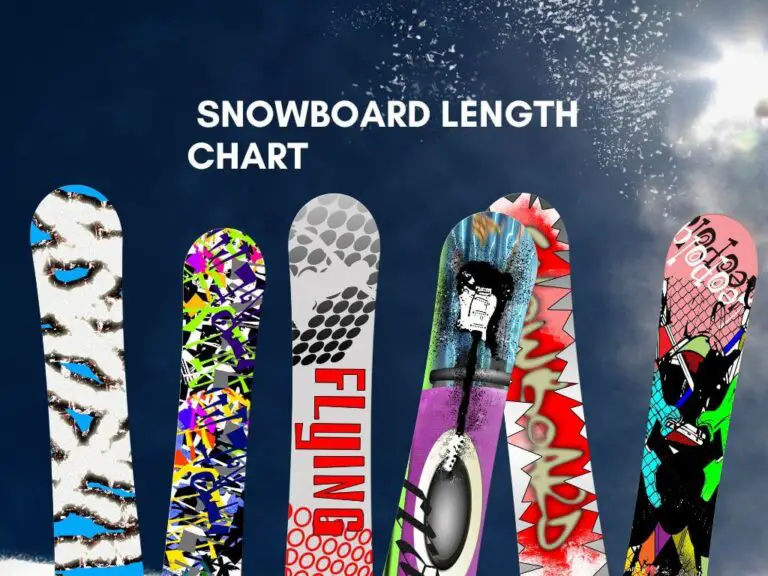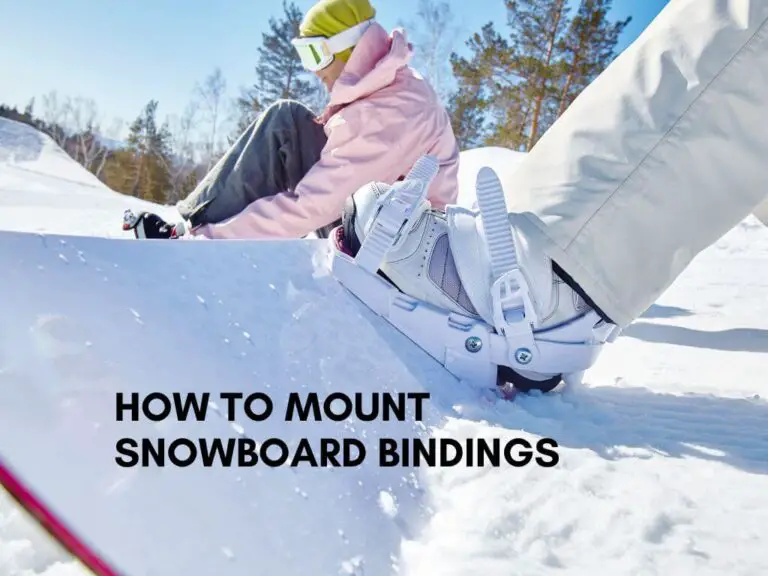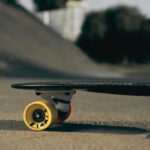When it comes to hitting the slopes, one of the most common questions beginners ask is, “Is skiing or snowboarding easier?“ Whether you’re planning your first winter adventure or simply curious about which sport to pick up, the answer isn’t as straightforward as you might think. Both skiing and snowboarding offer unique challenges and rewards, and the “easier” option often depends on your fitness level, coordination, and personal preferences.
In this guide, we’ll break down the key differences between skiing and snowboarding, explore the learning curves of each, and help you decide which one might be the best fit for you.
By the end, you’ll have a clearer understanding of what to expect—and maybe even a newfound confidence to conquer the mountains! So, grab your gear and let’s dive into the ultimate comparison: skiing vs. snowboarding.
Differences In Techniques
Choosing between skiing and snowboarding often comes down to personal preference. One of the key factors in making this decision is understanding the differences in techniques. This includes how your body is positioned and moves, and how you use the equipment. Knowing these differences can help you decide which sport might be easier for you to learn and master.
Body Positioning And Movement
Skiing and snowboarding require different body positioning and movement. In skiing, you face forward, and your legs move independently. You often shift your weight from one leg to the other. This makes it easier to balance and control your speed.
In snowboarding, you face sideways. Your feet are fixed on a single board, requiring you to move your whole body as one unit. This can be challenging for beginners because it requires more balance and coordination.
- Skiing: Facing forward, legs move independently.
- Snowboarding: Facing sideways, feet fixed on one board.
For skiing, the initial movements might feel more natural, especially if you’ve done inline skating or ice skating. The independent leg movement allows for better control on flatter terrains. On the other hand, snowboarding’s sideways stance can feel awkward at first. But once you get the hang of it, it offers a more fluid motion, especially on slopes.
Another key difference is how you stop. In skiing, you use a technique called the “pizza” or wedge stop. You bring the tips of your skis together and push the tails apart. In snowboarding, you use the edge of your board to dig into the snow and slow down.
Use Of Equipment
The equipment used in skiing and snowboarding also impacts how easy each sport is to learn. Skiing requires skis, poles, and boots that clip into bindings. Snowboarding requires a single snowboard and boots that strap onto the board.
Skiing equipment can feel cumbersome at first. Carrying skis and poles takes some getting used to. The boots are also stiff to provide ankle support, making walking awkward. However, the poles can help with balance and maneuvering on the slopes.
Snowboarding equipment is generally simpler. You only need a snowboard and boots. The boots are softer than ski boots, making them more comfortable to walk in. But without poles, you rely entirely on your balance and body movements.
| Equipment | Skiing | Snowboarding |
|---|---|---|
| Skis/Board | Two skis | One snowboard |
| Poles | Two poles | None |
| Boots | Stiff, clipped in | Softer, strapped on |
One advantage of snowboarding is the simplicity of the gear. It’s quicker to get in and out of your bindings. This can save time and make the sport feel more accessible.
In skiing, the poles help in flat areas and provide extra support. This can be a significant advantage for beginners. Snowboarding requires more effort to move on flat surfaces, as you can’t push with poles.
Both sports have their unique challenges and advantages. Understanding the differences in techniques can help you choose the one that suits you best.
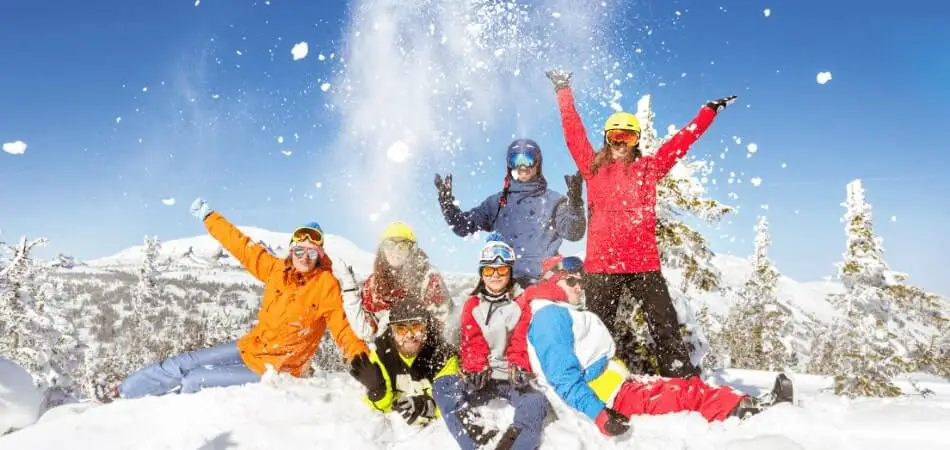
Learning Curve
The question of whether skiing or snowboarding is easier often boils down to the learning curve. Both sports have unique challenges and rewards. Understanding the learning curve can help you decide which one might be easier for you to pick up and enjoy.
Initial Challenges
Learning to ski or snowboard involves overcoming some initial hurdles. For beginners, skiing might seem easier to start with. This is because you have two separate skis, which can feel more stable. Here are some initial challenges:
- Balance: Skiing provides better balance with two skis, while snowboarding requires balancing on a single board.
- Movement: Skiers can use poles for support, but snowboarders rely solely on their body movements.
- Falling: Falling is frequent in both sports. Skiers might fall sideways, while snowboarders often fall forward or backward.
Beginners often find skiing more intuitive. The separate skis allow for more natural movements. Snowboarding, on the other hand, can feel awkward at first. The sideways stance is unfamiliar to many, and controlling the board takes practice.
Here’s a quick comparison of the initial challenges:
| Challenge | Skiing | Snowboarding |
|---|---|---|
| Balance | Easier due to two skis | Harder with a single board |
| Movement | Easier with poles | Harder, body movement only |
| Falling | Sideways falls | Forward/backward falls |
Progression Over Time
As you continue practicing, the learning curve for skiing and snowboarding changes. Skiers might find they can advance quickly at first, but snowboarding often rewards persistence. Here are some points on progression:
- Skiing: Skiers often learn to turn and stop more easily. The ability to use poles helps in the early stages.
- Snowboarding: Snowboarders might struggle initially, but once they grasp the basics, progression can be rapid.
- Techniques: Advanced techniques in skiing can be complex. Snowboarding techniques tend to be more about flow and style.
With time, many find snowboarding becomes more enjoyable. The initial struggle turns into smooth, flowing rides. Skiers might face more technical challenges as they advance. Both sports offer different rewards as skills improve.
Here’s a comparison of progression over time:
| Aspect | Skiing | Snowboarding |
|---|---|---|
| Early Progress | Quick | Slow |
| Advanced Skills | Complex | Smooth |
| Enjoyment | Consistent | Increasing |
In the end, both skiing and snowboarding have their unique learning curves. Your preference might depend on how quickly you want to see progress and what kind of challenges you enjoy.
Injury Risks
Choosing between skiing and snowboarding can be tough. One key factor to consider is injury risks. Both sports offer thrills and spills, but the types of injuries can differ. Understanding these risks can help you make an informed decision.
Common Injuries In Skiing
Skiing injuries often occur due to the nature of the sport. Skiers have their legs separated and their feet fixed in place, which can lead to specific types of injuries. Here are some common ones:
- Knee injuries: The knees are vulnerable, especially the ACL (anterior cruciate ligament). Sudden twists or falls can cause damage.
- Thumb injuries: Skiers often hurt their thumbs from falls or catching them on ski poles. This is known as “skier’s thumb.”
- Head injuries: Collisions or falls can lead to concussions or other head injuries. Wearing a helmet is crucial.
- Leg fractures: High-speed crashes or falls can result in broken legs.
Here’s a quick look at the common skiing injuries in a table:
| Injury Type | Cause |
|---|---|
| Knee injuries | Twists or falls |
| Thumb injuries | Falls or ski poles |
| Head injuries | Collisions or falls |
| Leg fractures | High-speed crashes |
Common Injuries In Snowboarding
Snowboarding has its own set of injury risks. Snowboarders have both feet attached to a single board, which changes the dynamics of falls and injuries. Common injuries include:
- Wrist fractures: Snowboarders often fall forward or backward, using their hands to break the fall. This leads to wrist injuries.
- Shoulder injuries: Falling on an outstretched arm can dislocate or fracture the shoulder.
- Head injuries: Like skiing, snowboarding can also lead to concussions and head injuries from falls or collisions.
- Ankle injuries: Snowboarders can suffer from ankle sprains or fractures, especially beginners trying to control the board.
Here’s a quick look at the common snowboarding injuries in a table:
| Injury Type | Cause |
|---|---|
| Wrist fractures | Forward or backward falls |
| Shoulder injuries | Falling on an outstretched arm |
| Head injuries | Falls or collisions |
| Ankle injuries | Controlling the board |
Terrain Accessibility
Choosing between skiing and snowboarding often comes down to personal preference, but one important factor is terrain accessibility. Different terrains can impact your experience on the slopes. Understanding which sport handles various terrains and weather conditions better can help you make an informed decision.

Suitability For Different Terrains
Skiing and snowboarding each have their strengths and weaknesses depending on the type of terrain. Skiers generally find it easier to navigate a wider variety of terrains. Here are some key points to consider:
- Groomed Trails: Skiers have an advantage on groomed trails due to their ability to maintain speed and stability.
- Powder Snow: Snowboarders excel in powder snow, offering a smoother and more enjoyable ride.
- Moguls: Skiers navigate moguls more efficiently, with their ability to make quick, tight turns.
- Steep Slopes: Skiers can handle steep slopes better, thanks to their poles and ability to carve precisely.
Below is a table summarizing the suitability for different terrains:
| Terrain Type | Skiing | Snowboarding |
|---|---|---|
| Groomed Trails | ⭐⭐⭐⭐⭐ | ⭐⭐⭐⭐ |
| Powder Snow | ⭐⭐⭐⭐ | ⭐⭐⭐⭐⭐ |
| Moguls | ⭐⭐⭐⭐⭐ | ⭐⭐⭐ |
| Steep Slopes | ⭐⭐⭐⭐⭐ | ⭐⭐⭐⭐ |
Adaptability To Weather Conditions
Weather conditions can significantly affect your skiing or snowboarding experience. Both sports have unique advantages and disadvantages depending on the weather.
Skiing: Skiers generally perform better in icy conditions because their equipment offers better edge control. Ski poles provide additional stability, making it easier to navigate through rough patches. Skiers can also handle varying snow conditions more efficiently, from slushy to packed snow.
Snowboarding: Snowboarders often find it challenging to deal with icy conditions due to the single board, which can easily slip. In contrast, snowboarders excel in powdery conditions, where the larger surface area of the board allows for a more enjoyable ride. Additionally, snowboarding in wet snow can be easier since the snowboard glides more smoothly than skis in such conditions.
Here’s a quick comparison:
| Weather Condition | Skiing | Snowboarding |
|---|---|---|
| Icy | ⭐⭐⭐⭐⭐ | ⭐⭐⭐ |
| Powder | ⭐⭐⭐⭐ | ⭐⭐⭐⭐⭐ |
| Wet Snow | ⭐⭐⭐⭐ | ⭐⭐⭐⭐⭐ |
| Slushy | ⭐⭐⭐⭐ | ⭐⭐⭐⭐ |
Understanding how skiing and snowboarding adapt to different terrains and weather conditions can help you choose the sport that suits your preferences and skills best.
Cultural And Social Aspects
When exploring whether skiing or snowboarding is easier, it’s essential to consider the cultural and social aspects. These sports are not just about the physical activity; they also have unique communities and social perceptions. Understanding these aspects can help you decide which sport might be more enjoyable for you.
Perceptions And Stereotypes
Both skiing and snowboarding carry distinct cultural perceptions and stereotypes. Skiers are often seen as more traditional and refined. Snowboarders, on the other hand, are viewed as rebellious and unconventional.
Common stereotypes include:
- Skiers: Often perceived as wealthy and elite.
- Snowboarders: Seen as younger and more adventurous.
These stereotypes can influence how newcomers choose between the two sports. For example, someone seeking a more established and classic experience might gravitate toward skiing. Conversely, those who want a modern and edgy vibe might prefer snowboarding.
The table below highlights some of these perceptions:
| Aspect | Skiing | Snowboarding |
|---|---|---|
| Age Group | Older | Younger |
| Style | Traditional | Rebellious |
| Image | Refined | Adventurous |
While these perceptions are not always accurate, they do shape the overall culture of each sport. It’s important to be aware of these stereotypes to better understand the community you might be joining.
Community And Social Dynamics
The communities surrounding skiing and snowboarding are vibrant and distinct. Skiing communities often have a long history and are deeply rooted in tradition. Snowboarding communities, being newer, tend to be more dynamic and inclusive.
Skiing communities are known for:
- Organizing formal events and races.
- Fostering a sense of heritage and continuity.
- Having established clubs and organizations.
Snowboarding communities are characterized by:
- Hosting freestyle events and competitions.
- Embracing diversity and new members.
- Encouraging creativity and individuality.
The social dynamics within these communities also differ. Skiers might enjoy après-ski activities in upscale lodges, while snowboarders might prefer casual meet-ups and outdoor gatherings. Each community offers unique social opportunities and experiences.
Understanding these dynamics can help you find your place within the sport. Whether you value tradition and structure or creativity and inclusivity, there’s a community waiting for you.
Cost Considerations
Choosing between skiing and snowboarding can be tough. One major factor to consider is the cost. The financial aspect of both sports includes the initial investment and ongoing maintenance and upkeep. Understanding these costs can help you make a more informed decision.
Initial Investment
The initial investment for skiing and snowboarding varies. This includes the cost of equipment, clothing, and accessories. Here’s a breakdown:
| Item | Skiing | Snowboarding |
|---|---|---|
| Basic Equipment (Skis/Board, Bindings, Boots) | $500 – $1,000 | $300 – $700 |
| Clothing (Jacket, Pants, Gloves, Goggles) | $200 – $500 | $200 – $500 |
| Accessories (Helmet, Poles for skiing) | $100 – $200 | $50 – $150 |
| Total Estimated Cost | $800 – $1,700 | $550 – $1,350 |
Snowboarding generally has a lower initial cost compared to skiing. Skiing equipment tends to be more expensive, especially when you factor in the need for poles. Clothing costs are similar for both sports, including jackets, pants, and gloves. Helmet costs are slightly lower for snowboarding.
Keep in mind that these costs can vary based on brand and quality. Beginner packages might be cheaper, but investing in better gear can enhance your experience and safety.
Maintenance And Upkeep
Maintenance and upkeep are crucial for both skiing and snowboarding. Regular care ensures your gear lasts longer and performs better. Here’s what you need to consider:
- Waxing: Both skis and snowboards need regular waxing. This helps with speed and control. Expect to wax your gear every 3-5 uses. Waxing costs around $10-$30 per session.
- Edge Sharpening: Keeping edges sharp is essential. This costs about $15-$25. You might need this service a few times a season.
- Repairs: Occasional repairs are inevitable. Patching up scratches or fixing bindings can add up. Budget around $50-$100 per season.
- Storage: Proper storage during off-season prevents damage. Use a dry, cool place. Specialized storage solutions can cost $20-$50.
Skiing requires additional care for poles, which can bend or break. Snowboarding has fewer components, making it slightly easier and cheaper to maintain. Both sports require regular investment in upkeep to ensure safety and enjoyment.
Frequently Asked Questions
What Is Harder, Skiing Or Snowboarding?
Skiing is often easier to learn initially. Snowboarding can be more challenging at first but becomes easier with practice. Individual preferences vary.
What Is More Physical, Snowboard Or Ski?
Snowboarding generally requires more physical effort due to its stance and movements. Skiing can be less strenuous but still demanding.
How To Choose Between Skiing And Snowboarding?
Consider your preference for speed and control. Skiing offers better balance and ease. Snowboarding provides a steeper learning curve but delivers a fun, surf-like experience. Try both to see which suits you best.
Are There More Injuries In Skiing Or Snowboarding?
Skiing tends to have more total injuries, but snowboarding results in more severe injuries. Beginners in both sports face higher risks. Proper training and safety gear can reduce injury rates.
Conclusion
Ultimately, whether skiing or snowboarding is easier depends on personal preference and physical ability. Both sports offer unique challenges and rewards. Try both to see which one suits you best. Remember, practice and patience are key to mastering either sport.
Enjoy the adventure and embrace the learning process on the slopes.

